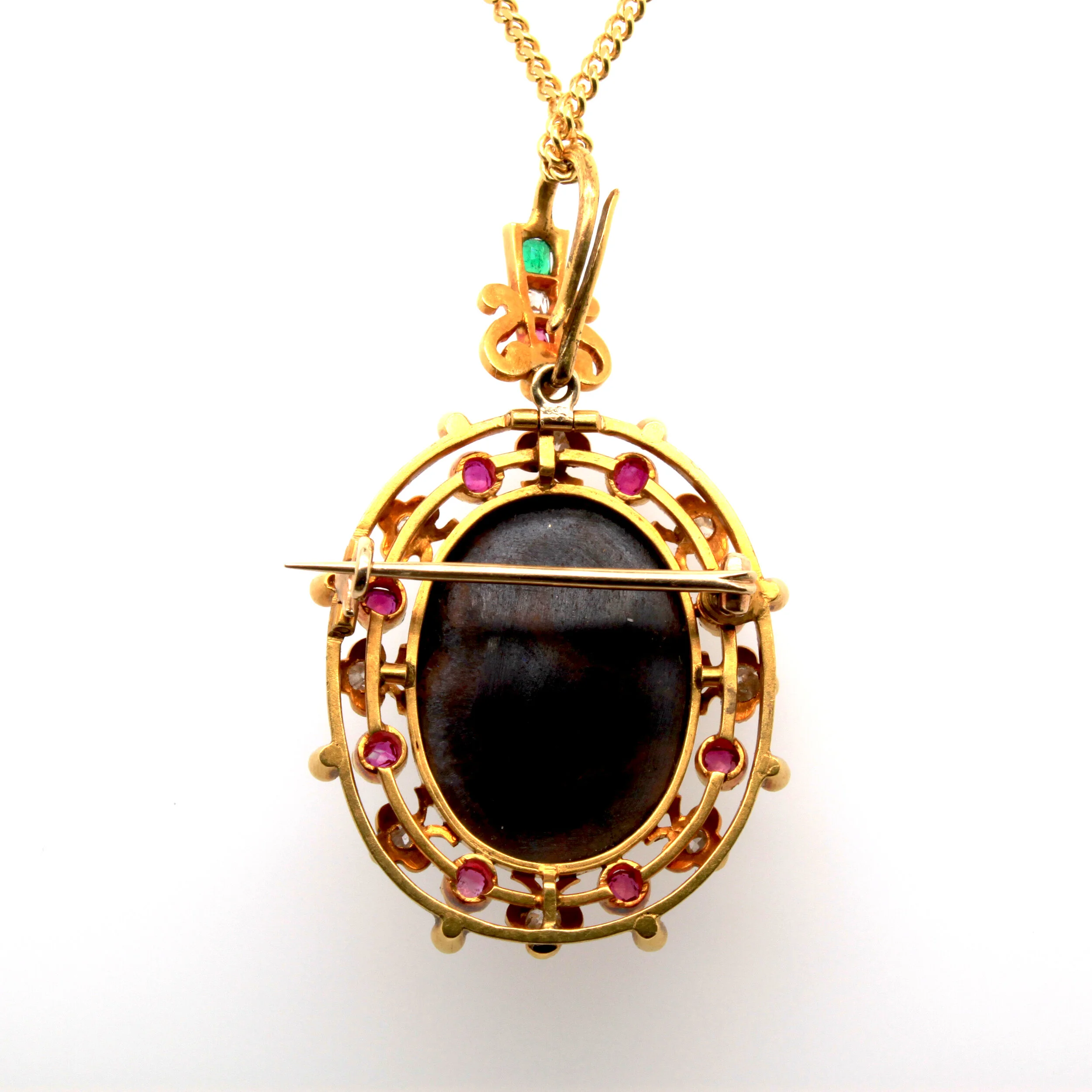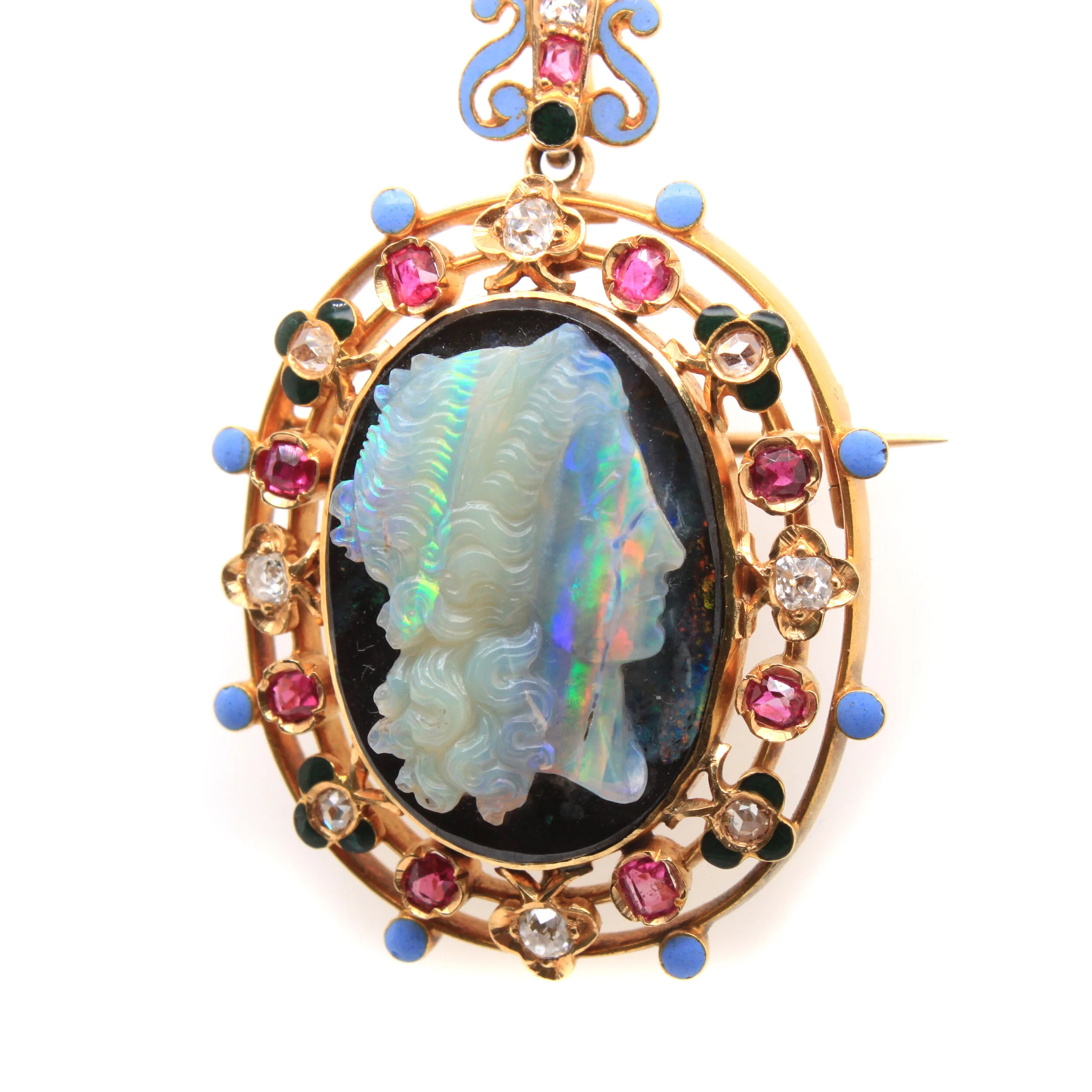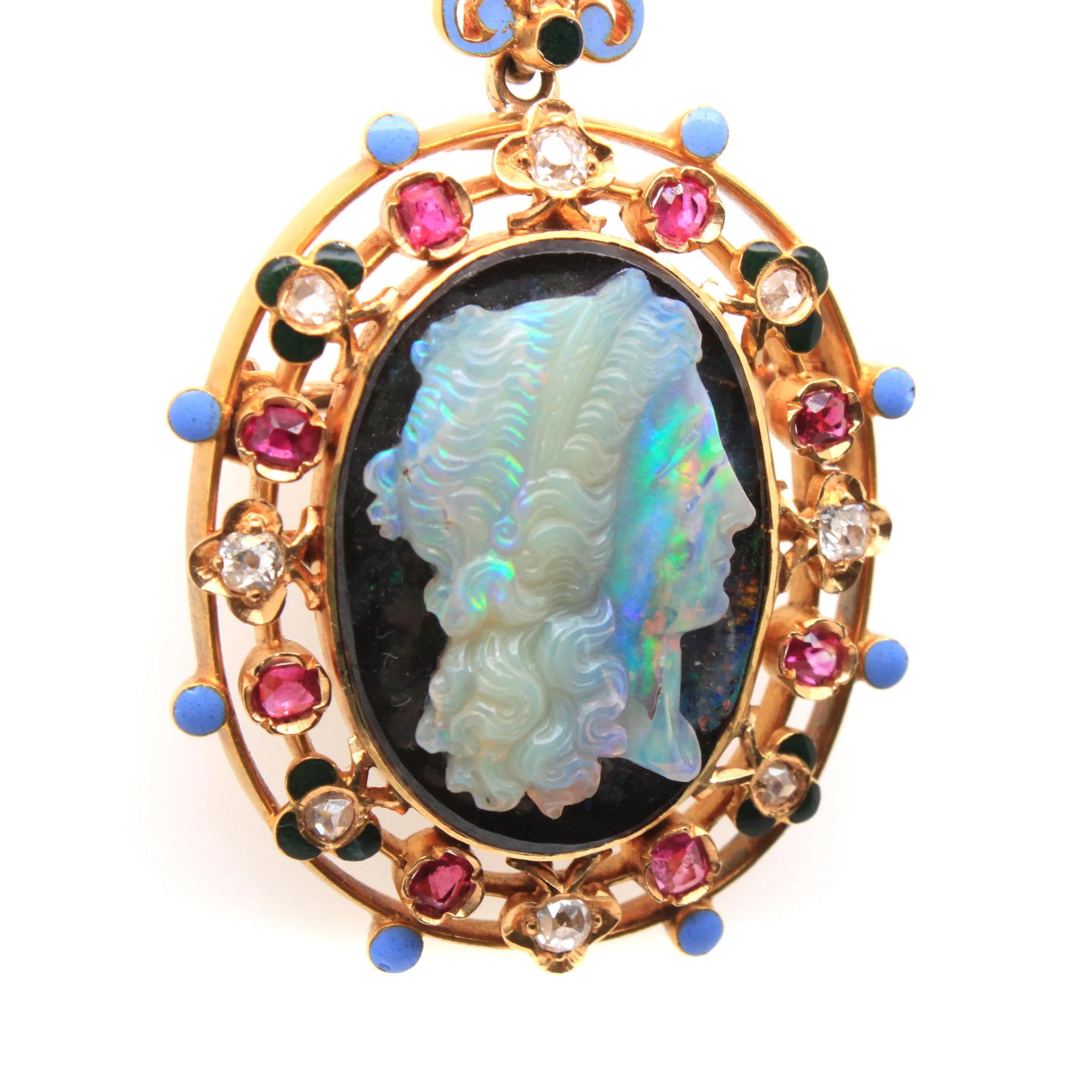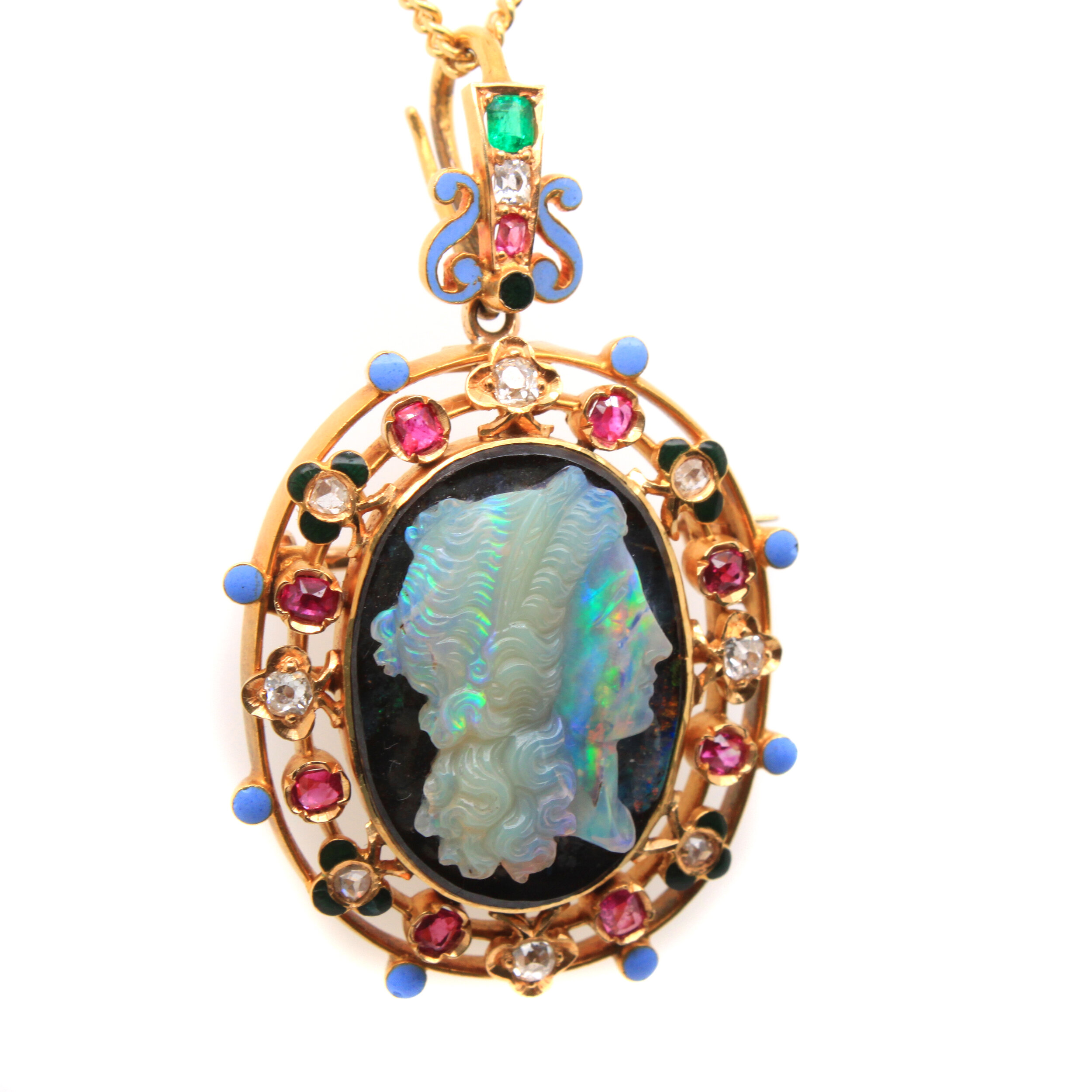Collection
Here you can see only a small glimpse of our collection.
Of course we have many more jewels, please contact us to find out more.
Opal Cameo Gem-set Brooch Pendant, Wilhelm Schmidt, ca. 1880s
Opal Cameo Gem-set Brooch Pendant, Wilhelm Schmidt, ca. 1880s
Renaissance Revival Opal Cameo Gem-set and Enamel Brooch Pendant, ca. 1880s
A beautiful and rare carved Opal cameo brooch pendant depicting Aphrodite? in a relief (attributed to master cutter Wilhelm Schmidt from Idar-Oberstein, Germany), surrounded with rubies, diamonds, emeralds and further accented with blue and black enamelling.
The cameo is carved perfectly and is of museum quality, with the matrix of the opal forming the background and the play of color coming out to show the portrait of the greek goddess.
The item is wearable as a pendant and also has removable brooch fittings.
About Wilhelm Schmidt
The German cameo engraver, Wilhelm Schmidt, (1845-1938), wrote to the gem collector, Abraham Booth, who owned numerous fine examples carved by the talented Schmidt: "In reply to your wish to be informed when opal cameos were first cut in Europe, I may mention the date of 1874, when I invented the new process of cutting opal cameos in such a manner as to utilise the matrix of rough opal for the ground... Mr John Brogden exhibited the first one, which I cut, amongst his other exhibits at the Paris Exhibition, 1878..."
Schmidt was born in Idar Oberstein, the European centre of the mineral, gemstone and lapidary trades. At the age of 15, he was sent to Paris as an apprentice and was taken under the wing of cameo-cutter, Arsène, who trained him in the neo-classical tradition. Despite his prodigious talent and winning prizes for drawing and draughtsmanship, by the time he graduated in the 1860s, the French fashion for stone cameos, either mounted as jewellery or as collectables for amateur students of antiquity, was waning.
Eventually, after several tough years, Schmidt settled in London, where he set up an engraving business in Hatton Garden, trading alongside his gem-dealing brother Louis, who imported numerous unusual and rare specimens with which he could work. Schmidt carved cameos for many of the best jewellery firms, including John Brogden, Carlo Guiliano and Child & Child (the presented item seems to be from this maker) , and attracted several prestigious patrons including the Museum of Practical Geology, to whom he sold cameos engraved from quartz, sardonyx, jasper, labradorite, moonstone and of course – the most unusual stone of all – opal, which was to become his trademark.
Carving opal is a hazardous undertaking to say the least, as opal can crack and spoil if the temperature conditions fluctuate. To quote the late scholar Gertrud Seidmann, a connoisseur of Schmidt's work, and to whom we are indebted for our knowledge of him: "opal cameos, if rare, were not unknown (in the 19th century) but Schmidt had invented a novel technique: instead of carving the whole cameo from precious opal, he used blanks with a thin layer of precious opal overlaying the matrix, in the same way in which the contrasted layers of agates were traditionally used to set off the background."
Schmidt never signed his work and the cameos he produced for jewellery shops and dealers were never credited to him. Examples, attributed by Seidmann, are in the collections of the Natural History Museum, London, the British Museum and the Fitzwilliam Museum, Cambridge.
Literature: Seidmann, Gertrud. 1988. Wilhelm Schmidt: The Last Neo-Classical Gem-Engraver. London: Source Title: Apollo CXXVIII No. 317 (July-1988). For the information given here on Schmidt and his cameos.
Illustrated Catalogue of Gems, Cameos & Amber Collected by A. Booth, Gloucester, published before 1923.
Catalogue of Bonhams Auction, 2015.



















